World’s smallest computer is here!
When IBM announced in March that it had produced the world’s smallest computer, it raised a few eyebrows at University of Michigan, which is home to the previous champion of tiny computing. Now, the team at Michigan University has developed an even smaller device, measuring just 0.3mm to a side—smaller than a grain of rice.
IBM has called for a re-examination of what constitutes a computer. Previous systems, including 2x2x4mm Michigan Micro Mote, retain their programming and data even when these are not externally powered. Unplug a desktop computer, and its program and data are still there when it boots itself up once the power is back. These new microdevices, from IBM and now Michigan, lose all prior programming and data as soon as they lose power.
In addition to RAM and photovoltaics, the new computing devices have processors and wireless transmitters and receivers. Because these are too small to have conventional radio antennae, these receive and transmit data with visible light. A base station provides light for power and programming, and it receives data.
One of the big challenges in making a computer about one-tenth the size of IBM’s was figuring out how to run at very low power when the system packaging had to be transparent. Light from the base station—and from the device’s own transmission LED—can induce currents in its tiny circuits.
“We basically had to invent new ways of approaching circuit design that would be equally low power but could also tolerate light,” said David Blaauw, professor of electrical and computer engineering, who led the development of the new system together with Dennis Sylvester, also professor of ECE, and Jamie Phillips, an Arthur F. Thurnau Professor and professor of ECE. That meant exchanging diodes, which can act like tiny solar cells, for switched capacitors.
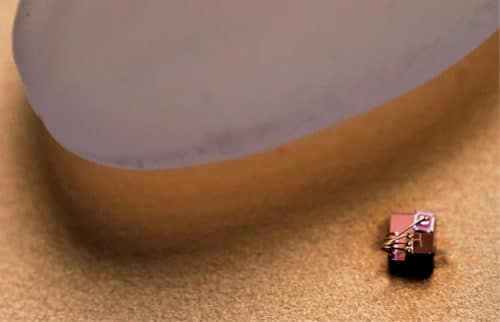
Another challenge was achieving high accuracy while running on low power, which makes many of the usual electrical signals (like charge, current and voltage) noisier. Designed as a precision temperature sensor, the new device converts temperatures into time intervals, defined with electronic pulses. Intervals are measured on-chip against a steady time interval sent by the base station and then converted into a temperature. As a result, the computer can report temperatures in minuscule regions, such as a cluster of cells, with an error of about 0.1°C.
The system is flexible and could be reimagined for a variety of purposes, but the team chose precision temperature measurements because of a need in oncology. Their longstanding collaborator, Gary Luker, professor of radiology and biomedical engineering, wants to answer questions about temperature in tumours.
Robot that can sort recycling by giving it a squeeze
Scientists at Computer Science and Artificial Intelligence Lab at Massachusetts Institute of Technology (MIT) have developed a robot arm with soft grippers that picks up objects from a conveyor belt and identifies what these are made from by touch.
The robot, called RoCycle, uses capacitive sensors in its two pincers to sense the size and stiffness of the materials it handles. This allows it to distinguish between different metal, plastic and paper objects. In a mock recycling-plant setup, with objects passing on a conveyor, RoCycle correctly classified 27 objects with 85 per cent accuracy.
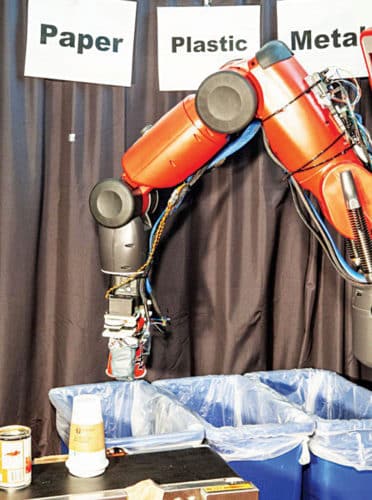
The creators believe that such robots could be used in places like apartment blocks or on university campuses to carry out first-pass sorting of people’s recycling, cutting down on contamination.
Since the robot picks up items one by one, it is too slow for industrial recycling plants, which are expensive to run and need to process waste quickly to cover costs.
The team is working on combining its touch-based robot with a visual system to speed things up. This robot would scan objects passing by and pick up only those it was not sure about.
Blue, the human-friendly robot designed for AI
A team of researchers at University of California, Berkeley, has developed Blue, a low-cost, human-friendly robot. Blue was designed to use recent advances in artificial intelligence (AI) and deep reinforcement learning to master intricate human tasks, all while remaining affordable and safe enough so that every AI researcher—and eventually every home—could have one.
Blue is the brainchild of Pieter Abbeel, professor of electrical engineering and computer sciences at UC Berkeley, postdoctoral research fellow Stephen McKinley and graduate student David Gealy. The team hopes Blue will accelerate the development of robotics for the home.
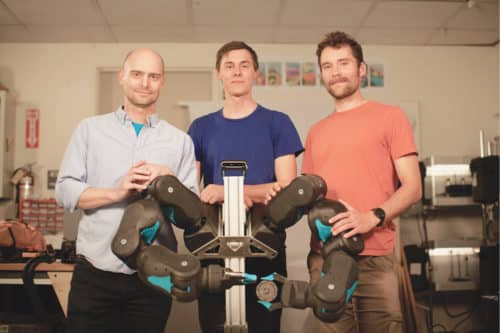
“AI has done a lot for existing robots, but we wanted to design a robot that is right for AI,” Abbeel said. “Existing robots are too expensive, not safe around humans and similarly not safe around themselves—if they learn through trial and error, they will easily break themselves. We wanted to create a new robot that is right for the AI age rather than for the high-precision, sub-millimetre, factory automation age.”
Blue’s durable plastic parts and high-performance motors cost less than US$ 5000 to manufacture and assemble. Its arms, each about the size of the average bodybuilder’s, are sensitive to outside forces—like a hand pushing it away—and has rounded edges and minimal pinch points to avoid catching stray fingers. Blue’s arms can be very stiff, like a human flexing, or very flexible, like a human relaxing, or anything in between.
AI accurately predicts the useful life of batteries
Scientists at Stanford University, Massachusetts Institute of Technology (MIT) and Toyota Research Institute have discovered that combining comprehensive experimental data and artificial intelligence (AI) revealed the key for accurately predicting the useful life of lithium-ion batteries before their capacities start to wane. After they trained their machine learning model with a few hundred million data points of batteries charging and discharging, the algorithm predicted how many more cycles each battery would last, based on voltage declines and a few other factors among early cycles.
The predictions were within nine per cent of the number of cycles the cells actually lasted. Separately, the algorithm categorised batteries as either long or short life expectancy based on only the first five charge/discharge cycles. Here, predictions were correct 95 per cent of the time.
Goodyear unveils concept tyre for flying cars
Goodyear recently unveiled its AERO concept tyre for flying cars at Geneva International Motor Show in Switzerland. The tyre would convert into a propeller for flying.
AERO is a tilt-rotor tyre that facilitates a seamless transition from ground-to-air travel. Instead of a rigid wheel, it features fan-like spokes. The solid airless tyre is flexible enough to dampen bumps in the road while being strong enough for high-speed rotation needed for rotors to create vertical lift. That rotation would be achieved using magnetic force to generate frictionless propulsion.
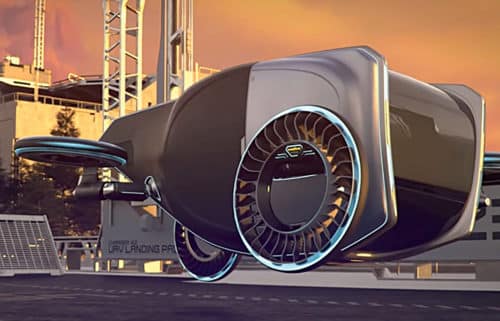
According to Daniel Hinque, engineer at Goodyear, who helped develop the tyre, “Individual blades absorb shocks while driving on the road but also act as robust rotors to create vertical lift when the tyre is tilted.”
AERO is equipped with light-based fibre-optic sensors to monitor road conditions, tyre wear and structural integrity. It would use artificial intelligence (AI) to combine and analyse sensor information and communications from other cars and nearby infrastructure. The AI processor would then recommend a course of action—including when to switch between flying or driving mode—and anticipate, identify and resolve potential tyre issues before these become a danger.
Samsung releases the world’s first 5G phone in South Korea
Telecom giant Samsung Electronics has released Galaxy S10 5G, the world’s first available smartphone with built-in fifth-generation (5G) communications, as South Korea seeks to build a lead in the transformative technology.
South Korea became the first country to launch nationwide 5G services, with three superfast networks going live, offering data speeds that allow users to download entire movies in less than a second, according to www.dailymail.co.uk
Hours later, US giant Verizon began commercial services in Chicago and Minneapolis, after rival AT&T made a 5G-based system available to select users in parts of 12 cities in December last year.
South Korea’s three mobile carriers, namely, SK Telecom, KT and LG Uplus, held launch events across Seoul for Galaxy S10 5G. Interactive virtual reality (VR) displays and robot demonstrations were on show to highlight the capabilities of the latest iteration of mobile Internet speed, and new users were excited about the possibilities, especially live streaming of sports games and university lectures.
MetaFly, a new flying experience
Edwin Van Ruymbeke and his team at BionicBird have developed MetaFly, a remote-controlled ornithopter, and are running a Kickstarter campaign to fund the first production run.
The aircraft can be controlled with a two-channel remote control, and has a range of 100 metres. Speeds up to 18 kilometres per hour can be reached, and the 55mA per hour hybrid lithium-polymer battery gives eight minutes of flight from a 12-minute charge. An upgrade kit available through the campaign lets users bring a power bank along during flights for even longer flying times, as reported by www.engineering.com
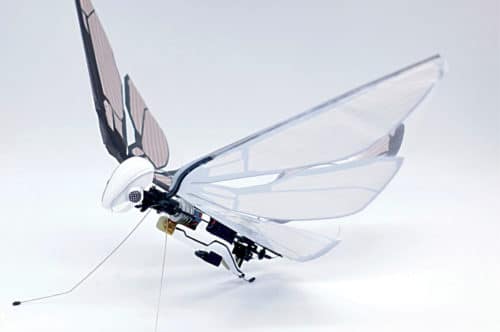
MetaFly has a wingspan of 29 centimetres, length of 19 centimetres and weighs less than 10 grams. The 0.8-watt coreless motor drives a gearbox with a 1/36 reduction. The remote measures 10cm x 15cm. Wings are built from carbon-fibre and liquid crystal polymer, and the tail can be moved up or down to give users more control or speed during flight.











Thanks for sharing such valuable information with us